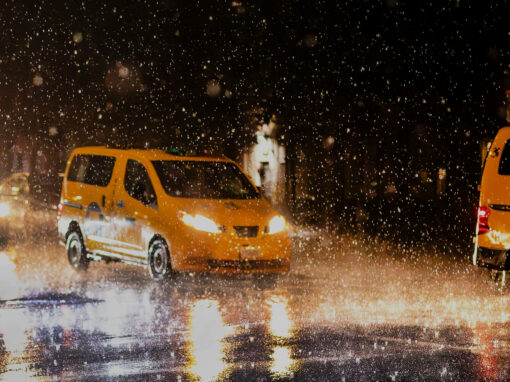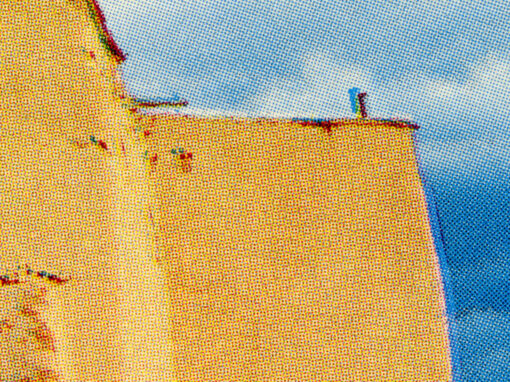One of the things I find most interesting about photography is its ability to capture and hold and sustain nuance. Yes, there are broad strokes, large drama, the Sturm und Drang of things going on. Whether the things going on are war or a child reading a book, it doesn’t really matter. Photography gathers light from every surface and allows us to wonder, to project, to ask questions, to test answers.
“Analog Iran” by Ali MC
Self-published, 2023
review by W. Scott Olsen
Yet, especially in photography, the more you look, the closer you look, the more detail is revealed. Even the simplest image can provoke hours of imagination. Images ask us to bring our own experience to what we are seeing. Sometimes, we engage with an image in a celebration of recognition. Sometimes, we engage in a celebration of discovery. Sometimes, though, we engage with the troubling news that what we bring is insufficient. Or simply wrong.
I am old enough to remember the Iranian revolution and what Americans call the Iranian Hostage Crisis. I am old enough to remember the Iran/Contra affair. And so, I am certainly old enough to remember a thousand ways Iran and the United States have painted each other as enemies up to today. Iran, to me, is more an idea than a place. More ideology than people eating lunch. I know my understanding is insufficient.
And now I have a book on my desk, Analog Iran, which helps me understand what I know about Iran lacks nuance.

According to the book’s press materials, Ali MC (Alister McKeich) spent four weeks in 2019 shooting more than 30 rolls of black and white 35mm film in Iran. The final product contains 68 images, mostly street shots,
The book contains both a foreword and an introduction (in both English at the front of the book and Farsi at the end). The foreword, written by the artist, lays out the hope. MC says,
In some ways, the book is about Iran, mostly depicted as a series of urban vignettes. In many other ways, this is a book about mood, the mood of a country under severe religious, economic, and political pressure.
…Analog Iran could never of course be a complete representation of an entire nation. Instead, this small book captures a moment in time when Trump was threatening war, the economy was in freefall, foreigners were being arrested, and ordinary Iranians were being impacted in ways I could never fully comprehend.
I had also arrived during Ashura, a time of grave religious importance when the Shiite faithful beat both chests and drums in a solemn display of grief for the martyred Imam Hussain. A relatively patriarchal affair, this overt display of religiosity is offset by the black clothes worn as part of such commemorations, not least the ubiquitous chador and mandatory hijab.
It also became quickly apparent that such attire was, for many, a public charade and behind closed doors, very different lives were led. It is these private lives that represent the space outside the lens apparent in Analog Iran.

In the introduction which follows, Yasaman Tamizkar, Curator and Mosem Platform Founder, Tehran, Iran, writes,
There is a precious memory deep in the heart of the tormented history of these cities…
The encounters of a photographer with a city is akin to an intimate relationship. Both sides are in deep desire to overawe one another at the beginning. It is love at first sight with the beauty of their exotic being that drifts you into their hidden secrets.
Ali MC remembers that the wounds the city revealed in front of his eyes doesn’t make it less of an attraction but the opposite. The city opened up and that is something worth remembering, if only for a fleeting moment, captured on camera.

At the beginning of this book, there is a definition. To begin any work with a definition is a bit of a trope, but when it works, it is extraordinary. This book begins by defining analog. In the photography world, of course, analog means film. And all the images in this book were shot on film. But that’s not the whole point. “Analog” as an adjective means “relating to or using signals or information represented by a continuously variable physical quantity, such as spatial position or voltage.” As a noun, it means “a person or thing seen as comparable to another.”
Analog, as both adjective and noun, is the thesis here. And to begin a photobook with the ideas of “continuously variable physical quantity” and “comparable to another” is brilliant.

Analog Iran is not a tourism book, nor is it ethnography or sociology. It’s not about surprising ancient architecture or Islamic festivals. It is, instead, straight out of the street photography tradition, an intimate book that shows you moments only insiders recognize as being resonant.
There are images of people playing soccer, waiting to fill a car with gasoline, and looking for customers at a kiosk. Sometimes, the images reveal nothing more than an empty parking lot. Sometimes, the images are a mother holding a child, family portraits on a wall, street vendors, or someone riding a bicycle.

A group of men fixing a motorcycle. A group of men eating in a cafe. A group of women, one of them checking her cell phone at a public gathering, a crowd in the distance. An apparently homeless man sleeping in the street, sleeping dogs in the shade behind him.
Some images are poignant. Some are documentary. A handful contain people who seem happy. But the overwhelming attitude here is capturing a kind of solemnity that might be desperation or at least longing. There is a lot of waiting in these images. In waiting, there is always both hopefulness and despair.

Variable physical quantity, indeed. Comparable to something else. The book does not ask us to compare these images to their possible counterparts in New York, Chicago, Milan, or Paris. No, the comparing here, at least for me, is to our understanding and assumptions about Iran in the modern era.
Not one of these images fits the overly generalized and simplistic idea of Iran. That’s the power here. Every image reveals a narrative – a personal narrative in a larger social context – I find challenging to understand. Nuance is personal and intimate. Analog Iran is an invitation.

ALI MC
WEBSITE
“ANALOG IRAN” – THE BOOK
A note from FRAMES: Please let us know if you have a forthcoming or recently published photography book.




